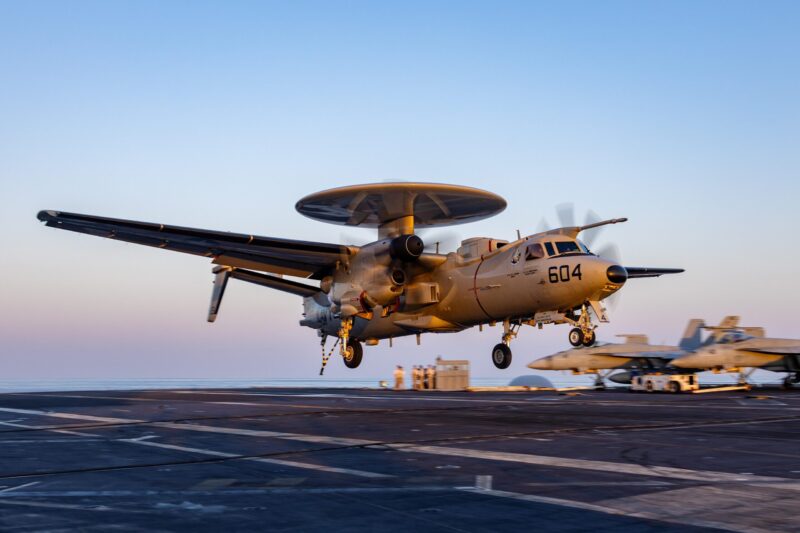
An E-2D Hawkeye from the “Seahawks” of Airborne Command and Control Squadron (VAW) 126 lands on the flight deck of the Nimitz-class aircraft carrier USS Harry S. Truman (CVN 75) during flight operations in the Atlantic Ocean in August.
NAVAL AIR SYSTEMS COMMAND, Patuxent River, MD.: The fleet is one step closer to significant improvements for the E-2D Advanced Hawkeye after the E-2/C-2 Airborne Command & Control Systems Program Office (PMA-231) and industry partner Northrop Grumman Corporation wrapped the E-2D Advanced Hawkeye Delta System Software Configuration (DSSC)-6 Preliminary Design Review (PDR) recently.
This configuration will improve the aircraft significantly by reducing pilot workload, improving situational awareness and bringing vital readiness and reliability upgrades paired with architecture and cybersecurity improvements.
The PDR asses the allocated baseline and authorizes the transition into a detailed design for the E-2D DSSC-6 program upon closure of the review.
The E-2D DSSC-6 PDR was briefed to a 10-member Technical Review Board, co-chaired by Gary Evans, NAWCAD Director of Systems Engineering and Hin Chan, NAWCAD Director of Software Engineering. According to Evans, the E-2D DSSC-6 team is “leading Naval Aviation” in transforming a franchise platform architecture to take advantage of the advent of digital engineering.
During the review, the combined government and industry partner teams captured request for action forms to capture actions that are collaboratively managed by the combined DSSC-6 teams to enable a mature and robust system design through the detailed design phase which will be assessed at the critical design review, scheduled for next fiscal year.
“Successful completion of the E-2D DSSC-6 PDR is an affirmation of the ground-breaking work undertaken by the combined PMA-231 and NGC teams,” said Lt. Cmdr. Neil Whitesell, PMA-231 Level 2 Program Manager for DSSC-6. “It represents a major programmatic milestone in the acquisition of technology key to maintaining carrier-based airborne command and control dominance well into the next decade.”
With these upgrades, this configuration will provide avionics infrastructure improvements to flight and mission systems. These improvements increase crew effectiveness, address parts obsolescence, add improved computing and electronic storage, improve connectivity for command and control and create a modular open systems environment for future technology insertion.
The first test flight of an E-2D with this configuration is scheduled for fiscal year 2027, with initial operational capability scheduled for fiscal year 2030.


